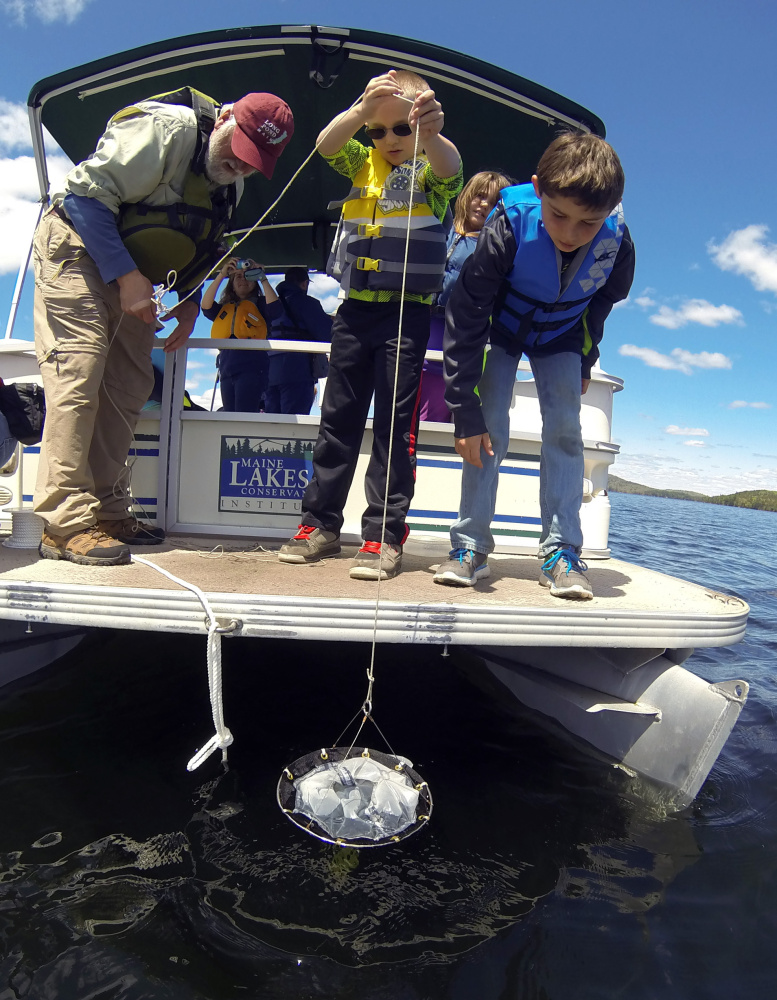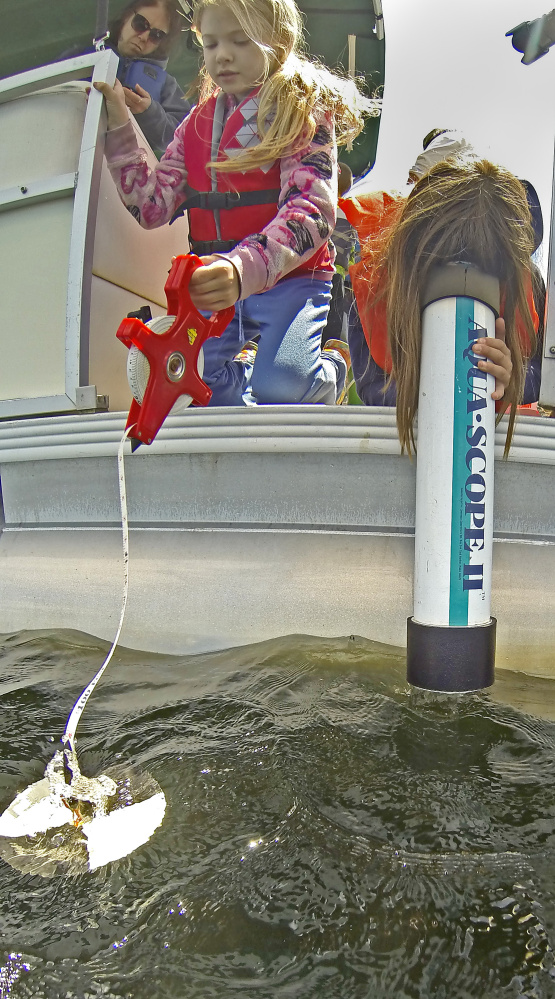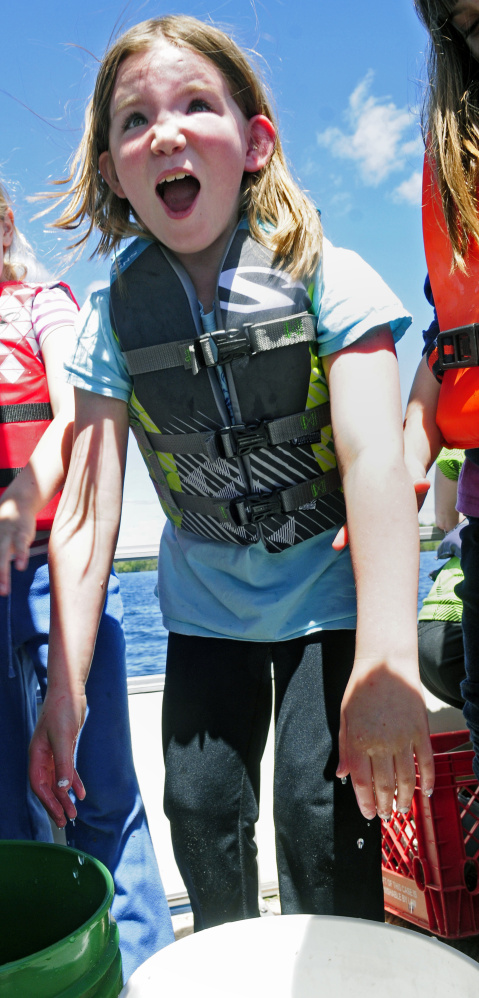BELGRADE LAKES — Luke McLaughlin has been on the Maine Lakes Society’s floating classroom many times, but that didn’t stop him from enjoying another trip on Great Pond.
McLaughlin and the rest of Carolyn Watkins’ third-grade glass from Mt. Vernon Elementary School spent Wednesday at the Maine Lakes Resource Center. The outing was part of the Lakes Alive program run by the Maine Lakes Society.
“I just like seeing what’s in the water,” Luke said while checking out his discovery under a microscope device called a Ken-a-Vision. “It’s really fun.”
The class split into two groups for the day. While one group was on land using nets to scour the shoreline for crayfish and other animal life, the other was on the 30-foot Melinda Ann pontoon boat, which is outfitted with innovative instruments and hands-on activities.
“It’s so fun seeing them out here,” said Cheryl Daigle, executive director of the lakes society. “They’ve had a good comprehensive experience.”
Peter Kallin and Phil Mulville led the students in several experiments, including using a plankton tow, a water temperature comparison test and a water clarity test.
McLaughlin, 8, and classmate Micah Sealsberry, 9, were the first to use the plankton tow, a net-like device that is dropped into the water to collect samples of plant and animal life. In their first try, the pair filled a small container with water that contained several worms and plankton.
Gloria Mrazik was amazed at the difference in water temperatures at different depths. She recovered two samples, put each into a bucket, and she and other students put their hands in to compare temperatures.
“Wow, that one is so cold,” Gloria said after feeling the water sample collected from below the thermocline, a thin layer in a lake or pond in which temperatures drop more rapidly with depth than in other layers.
“Some of the students are really, really into it,” said Kallin, president of the lakes society. “They are totally engaged and asking questions or pointing things out.”
Students used a Secchi disc and aqua scope to measure water clarity while lying on their chests and leaning over the edge of the boat. Mulville, who captained the boat, cautioned students that water clarity doesn’t necessarily indicate whether a water body is healthy or not.
Jennifer Jespersen, a member of the lakes society’s executive committee and owner of an environmental consulting and eco-design company, said nature-based learning, which began last year when the students participated in “Bugs in the Classroom,” immerses the students in the environment.
“It gets them outside exploring and observing, and our hope is that they can become future lake stewards,” Jespersen said. “I told them to slow down and look around and be a part of the outdoors.”
Watkins said her class had been looking forward to the trip and talked about it for the past several weeks. A lot of students don’t have the chance to get outdoors, she said, so a day like this is important.
“Anytime you can have kids doing hands-on activities, it really makes the learning that much deeper,” Watkins said. “They hold onto what they learn a lot longer.”
The students also wrote in a nature journal, participated in a scavenger hunt and used a watershed model inside the resource center to conduct an experiment on storm runoff. Before heading back to school, the class used what they learned to create a large mural to be displayed at their school before it’s featured at the Maine Lakes Conference at Unity College at the end of June.
Jason Pafundi can be contacted at 621-5663 or at:
jpafundi@centralmaine.com
Twitter: @jasonpafundiKJ
Send questions/comments to the editors.





Success. Please wait for the page to reload. If the page does not reload within 5 seconds, please refresh the page.
Enter your email and password to access comments.
Hi, to comment on stories you must . This profile is in addition to your subscription and website login.
Already have a commenting profile? .
Invalid username/password.
Please check your email to confirm and complete your registration.
Only subscribers are eligible to post comments. Please subscribe or login first for digital access. Here’s why.
Use the form below to reset your password. When you've submitted your account email, we will send an email with a reset code.